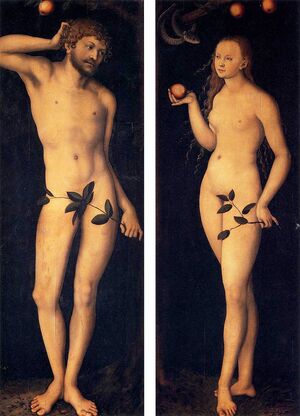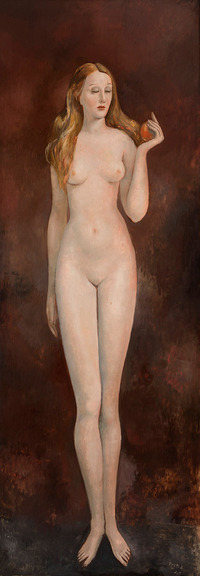Eve: the first femme fatale
Throughout the history of art, the biblical figure of Eve has been the subject of countless representations whose iconography has built and sustained a certain archetype of the female gender.
The episodes from the life of the first parents of humanity have occupied a preferential place in artistic imagery due in large part to the fundamental role they played in the spread of Christian doctrine, but also and above all during the Renaissance for being a theme that allowed them to combine religiosity with anatomical studies that were so essential in their development. Illustrating bibles and codices, forming part of altarpieces and capitals or in completely independent works, artists of all time as prominent as Memling, Cranach, Dürer, Titian or Rubens wanted to capture one of the great biblical episodes on which culture has been based. Western religion since the Middle Ages.

Within this cycle, the episode that narrates the act of disobedience that triggered the original sin is probably one of the most recurrent in the history of art and whose iconographic program, as symbolic as it is powerful, has endured like few others in our culture . In fact, no female stereotype has become as ingrained in our culture as the one originating with Eva. Her figure will symbolize the first queen of sin in the history of humanity, being guilty of unleashing original sin. in the world after being tempted by the serpent and convincing Adam to bite the forbidden fruit of the Tree of good and evil. From her, new icons of women associated with tempting, disturbing and even demonic aspects will follow one another that, like the femme fatale, lead the man (Adam) to perdition. The classic compositional scheme of this type of representation shows us Adam and Eve naked and located more or less symmetrically on each side of the tree of knowledge. While Adam remains expectantly on the scene, Eve takes the initiative by stretching out her arm to reach the fruit or, alternatively, taking the apple directly from the snake’s mouth. that appears coiled around the trunk of the tree.
Starting from this model, small variations will be introduced in which Eve will take on a greater role as the instigator of sin, whose power of seduction makes Adam fall into temptation. On the contrary, it will be usual for Adam to appear in a dissuasive attitude, trying unsuccessfully to prevent Eve from reaching the fruit. In this sense, and despite the fact that some artists such as Michelangelo or Frans Floris were in favor of showing disobedience as a common act, the vast majority fit their works into the Judeo-Christian tradition, emphasizing Eve’s guilt and therefore her role as sinner and cause of the condemnation that all humanity will endure until the end of time.
Likewise, it will also be usual to represent them just at the moment in which, after having succumbed to temptation, they discover their nudity and in a gesture of shame they cover themselves with their hands or leaves.
Despite the reinterpretation that religious myth has undergone, the residue of this long iconographic tradition has endured in subsequent generations of artists who, under the sign of their time, have addressed the symbolism that the figure of Eve embodies. This is the case of the monumental Eva made by Pere Pruna, who, as Cranach or Dürer already did, represents Eva independently, to make her the absolute protagonist of the composition. The contours of the figure of the woman, whose everlasting presence makes her the backbone of her career, are cut out against a neutral background, thus concentrating all our attention on Eva’s attitude and presence. Pruna reflects the imprint they left on classical and Renaissance aesthetics, following the canon of stylized beauty of soft and delicate forms that are in tune with the return to order after the rupture that the avant-garde represented.
Unlike the works we have seen so far, Pruna introduces a significant change: Eva appears completely naked, shamelessly showing her body and thus leaving behind the tradition of repentant and wealthy Evas who cover their nudity after having committed the sin original. However, the gesture of his face with his eyes closed gives off an ambiguous interpretation whose meaning can be understood in two ways: on the one hand, Eva’s unconsciousness, who after her actions has not been able to open her eyes and see for the first time the dichotomy between good and evil and, on the other hand, inner knowledge and intuitive that emanates from within after having tasted the forbidden fruit.






